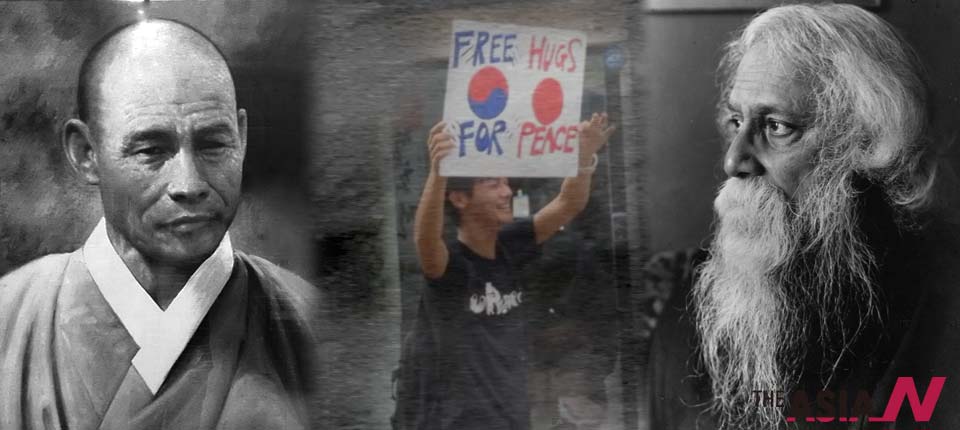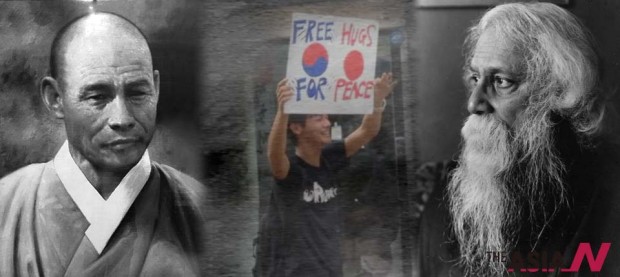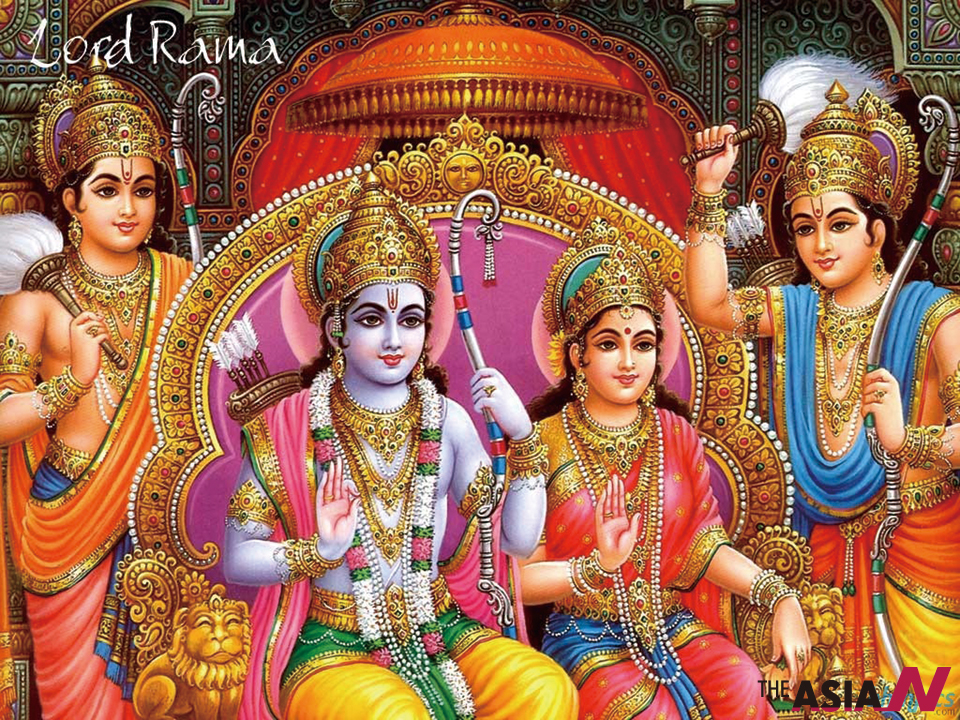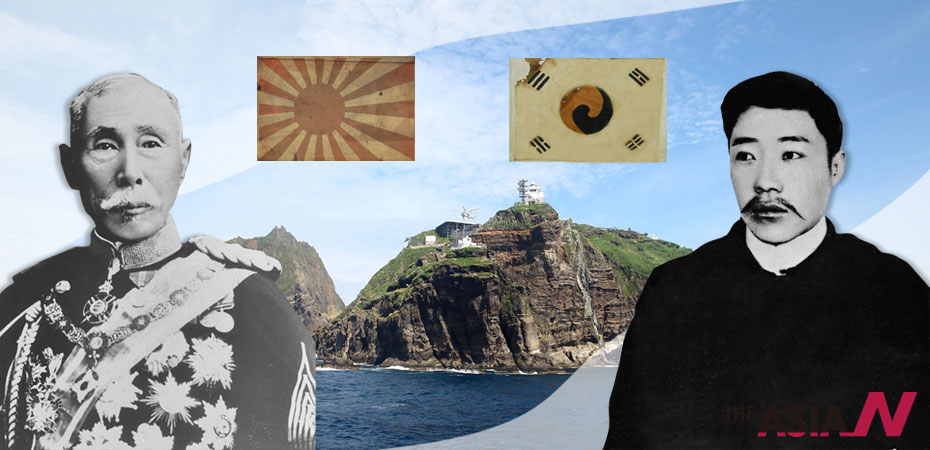
Light the Lamp: Inspiration from Tagore and Han Yong-Un
Joint Project between the Northeast Asian History Foundation and The AsiaN
![]()
*Editor’s Note: Security in East Asia is swaying in a rough sea. North Korea’s nuclear crisis has been highly elated amid existing territorial disputes and deep-rooted conflicts between nations in the region. South Korea, China and Japan, the countries directly involved, are all looking for a new order in the process of power shift. In search of sensible solutions for historical conflicts in East Asia, The AsiaN and the Northeast Asian History Foundation have jointly featured a column series by experts on current issues in East Asia. The contribution series of in-depth analyses, insights and strategic solutions will be provided in four languages including English, Korean, Chinese and Arabic.
[Expert Column Series on Current Issues in East Asia] ② Light the Lamp: Inspiration from Tagore and Han Yong-Un
The history of the human race is replete with bloody wars, subjugation, and brutality. Most ancient Asian societies have witnessed invasions by alien cultures for territorial and material gains.
But as Buddha said, “everything changes, nothing remains the same”. We, in India, know too well that civilizations evolve over time. The Indian sub-continent experienced the bloodiest Islamic invasions for over one thousand three hundred years, first by the Arabs and then by the Mughals. Even before the Mughal Empire came to an end, the British colonizers came in the 17th century and then subsequently ruled India as a dominion for ninety years.
The Islamic conquest of India is probably the bloodiest story in the history of mankind. The massacre of Hindus is unparalleled and bigger than the Jewish Holocaust, Soviet tyranny, Japanese massacre of the Chinese and bigger than the massacre of Armenians by Turkey.
According to several historians, during 1000 AD and 1500 AD, almost 80 million Hindus were exterminated. It was indeed “genocide”. It was an intentional attempt to destroy an ethnic community constituted by bonds of kinship and a common religion and socio-economic position. An attempt to completely exterminate the native Hindu.
India was rebuilt and the essence of Hinduism assimilated the alien cultures…and the nation emerged once again as strong as ever.
India is not alone to have experienced the brutality of invaders and conquerors. In East Asia, the ancient culture of Korea experienced more or less the same fate for over a century. Korean history is full of aggressive Japanese invasion, political assassination, cultural desecration, violence, enslavement, and all the abuses that come along with subjugation of a race.
Like India, one of the world’s oldest civilizations, Korea, too, has a recorded history since 2,333 B.C. It enjoyed long periods of peace throughout its history. But in 1910, Korea was annexed by Japan, becoming a colony, like India, until 1945. During World War II, Korea was devastated and by the end divided into two countries -` just as the British divided India before leaving the continent.
The saving grace for both cultures has been the philosophers, thinkers and writers. It is they who have carried the deep rooted desire to survive and evolve into more progressive, humane and compassionate races.
In view of rising nationalism and the struggle for national identity, year 1929 was important for both countries. In Korea, anti-Japanese demonstrations continued. The Gwangju Students Anti-Japanese Movement for independence became a historical landmark that made Japanese military rulers even more ruthless.
The Independence movement in India was at its peak in December 1929. The Indian National Congress adopted a resolution calling for complete independence from the British. A civil disobedience movement was launched throughout the country.
Korean students, who refused to accept the police brutalities, took to the streets. In India, young Bhagat Singh threw a bomb in the assembly house, along with leaflets stating their revolutionary philosophy – ‘to make the deaf hear’.
In this backdrop of uprising and turmoil, the great Indian writer and the Nobel laureate Rabindranath Tagore made his third visit to Japan in 1929. He met some nationalist and patriotic Korean youth in Tokyo… who pleaded with him to visit Korea.
In his own way, Tagore criticized the rise of a strong nationalism within Japan and its emergence as an imperialist nation. Tagore’s criticism was not appreciated by the Japanese audiences and political establishment.
Not having visited Korea even once, and being aware of what Japanese imperialism meant to Koreans, perhaps the conscience of the emotional, creative writer and intellectual in him made him look beyond. He wrote four lines of ‘In the Golden Age of Asia.’
“In the golden age of Asia,
Korea was one of its lamp-bearers
And that lamp is waiting to be lighted once again
For the illumination in the East.”
In hindsight, one can feel the hope and aspiration he had from the ancient culture of Korea. In any case, he would have been much happier with the post war emergence of Japan as a peaceful power.
Tagore came from a country which had already suffered Islamic invasions and was now reeling under British colonial policies. Though he had admiration for Mahatma Gandhi, he was unsure of Gandhi’s form of nationalism.
Tagore strongly rebelled against the nationalist form that the independence movement took, and this made him stay away from taking an active part in contemporary politics…he himself never fought for self-rule that Gandhi propounded.
Unfortunately, Tagore died before he could see the end of British colonial rule of India and the Japanese subjugation of Korea.
But while he wrote and travelled across the world, he was not alone. The great poet of Korea, a contemporary of Tagore, the monk poet, Han Yong-Un, ceaselessly reviewed, translated and published works of Tagore. His own writings were deeply influenced by the humanism of Tagore.
Since the liberation from a colonial past, both India and Korea have carried the burden and legacy of division based on political ideology and religious fundamentalism.
Both cultures were torn by post war political and religious bigotry. Both continue to live in the hope of a more tolerant environment and work towards resolving deep rooted prejudices within.
In the last six decades, the world has changed. Global power equations have been altered. However, invasions by global bullies have continued to desecrate more cultures. Less powerful and vulnerable cultures have taken refuge in nuclear technologies to threaten and ward off the rich and powerful.
In this new age, when human-rights is the buzzword and media guides public opinion, it is increasingly difficult for invaders to justify their act. Economic colonization of countries is the new way of subjugation.
India continues to struggle to keep the sanctity of the Line of Control with Pakistan. New Delhi continues to reason and cajole Pakistan for a meaningful dialogue and facilitate divided families to visit on both sides of the border. Rail and road links are revived, while diplomats of India and Pakistan continue to talk on trade and commerce.
Nevertheless, India stands divided even as peoples of both countries share the same history, culture, literature, food and blood. The ultra-nationalism that Tagore abhorred has taken center stage.
The post-cold war era has thrown a new and intricate strain of relationships between nations, completely devoid of social, cultural and human considerations. Pakistan continues to receive huge amounts of US aid in return for being a US launching pad in South Asia. India, with a massive middle class market, continues to woo both the Russians and Americans. And both, India and Pakistan, strongly believe in a nuclear deterrent policy.
However, South Korea and North Korea too have not been able to resolve their differences. In an article of October 2011, President elect Ms. Park Geun-Hye, daughter of late Korean President Park Chung-hee, optimistically said, “Even as Seoul and its allies strengthen their posture against North Korea’s militarism and nuclear brinkmanship, they must also be prepared to offer Pyongyang a new beginning. Trust can be built on incremental gains, such as joint projects for enhanced economic cooperation, humanitarian assistance from the South to the North, and new trade and investment opportunities….” A very positive thought that she may have to convert into reality and North Korea will have to take two steps forward.
In view of collapsing left political orientation with market forces taking over the global politics on one hand and dictatorships being rejected across the world, Pyongyang will have to rethink afresh and blow with the wind.
It is unfortunate that contemporary geopolitics and trade have pushed the intellectual fervor of writers, thinkers and artists like Tagore and Han Yong-Un into the dustbin of history. Both Seoul and Pyongyang have the responsibility to erase the Japanese colonial nightmare from the young Korean intellectual mind and let the dream of Tagore come alive… “lamp is waiting to be lighted once again, For the illumination in the East.”
To the young in India, Pakistan, South Korea, North Korea and Japan what matters is Today and not Yesterday…they are looking at Tomorrow. Politicians will have to take an extra step towards the hope and aspirations of the young…territorial boundaries have been obliterated by the New Media and young minds are meeting without prejudice.
The video of Koichi Kuwabara, where a young Japanese boy holds a placard that reads, “Free Hugs For Peace”, and goes to hug hundreds of young Koreans in the streets of Seoul, is a symbol that no country can ignore. This is how the youth thinks today and we need to honour the sentiment. Ownership of the islands of Takeshima does not matter to them.
These young are the new age Tagore and Han Yong-Un.













One thought on “Light the Lamp: Inspiration from Tagore and Han Yong-Un”
“A thousand miles of journey starts with a single step.” is My favorite saying. The instance of a japanese student hugging koreans is the small step to long journey. History is beautiful but at the same time hard to separate from it. It is in our education, values, and identity with somewhat mixed feeling with Japan. Even if it is Asian country, We still less favour Japan than many other continent’s nation. I think I also have that bias. It is not an easy thing to fix bias. But to know some thoughts are bias is far more easy thing. Maybe the time has come to think about it.